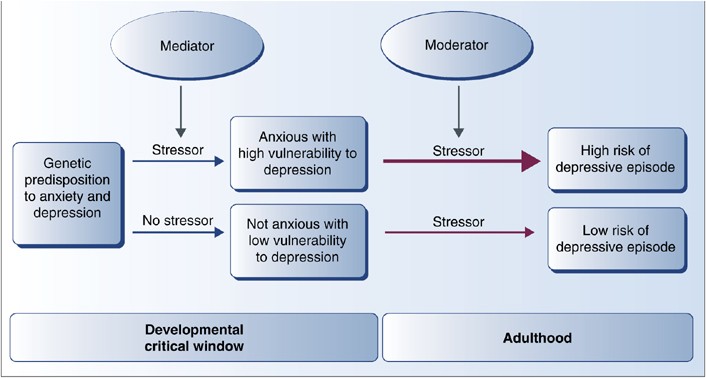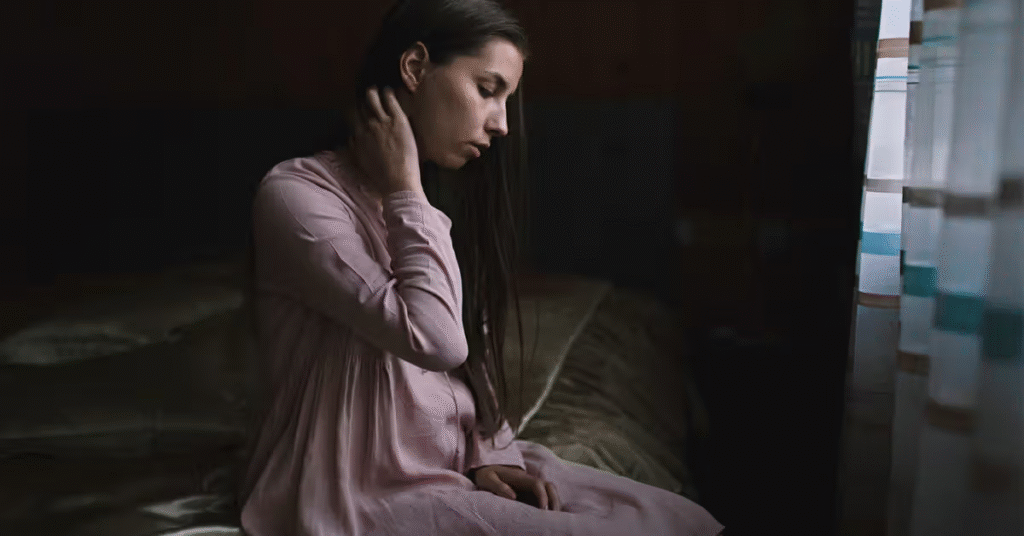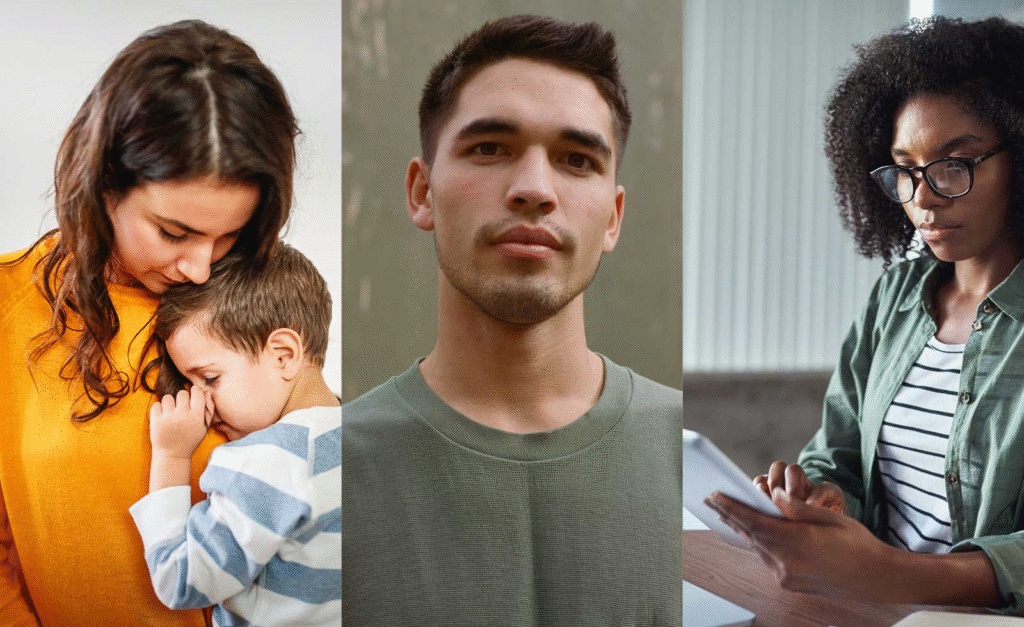
Discover why anxiety is becoming America’s new normal, what’s driving it, and 7 powerful insights with actionable strategies you can use today to regain control and peace of mind.
Anxiety is rapidly emerging as a baseline experience for many Americans rather than an occasional challenge. This article explores how this shift occurred, why it matters, and what individuals and communities can realistically do about it — backed by data, expert insight, and relatable real-life stories.
1. What Does It Mean for Anxiety to Become “America’s New Normal”?
When we say anxiety has become America’s new normal, we’re asking: has the experience of persistent worry, tension, and unease become so common that it now defines the American emotional landscape?
Let’s look at the numbers:
- 19.1% of U.S. adults experience an anxiety disorder every year.
- The lifetime risk of developing one is 31.1%.
- Between 2019 and 2022, adults reporting recent anxiety symptoms rose from 15.6% to 18.2%.
In short: yes — anxiety is now a defining American experience.
But calling it “normal” doesn’t mean it’s healthy or inevitable. It reflects how deeply social, cultural, and economic pressures have reshaped what we consider “everyday life.”
2. How We Got Here: The Roots of Rising Anxiety in America
1 Economic Uncertainty & Financial Pressure
Financial stress is one of the top drivers of anxiety in the U.S. Economic instability, inflation, and job insecurity all amplify worry.
Real-life example:
Maria, a 34-year-old hospitality manager from Chicago, lies awake at night budgeting her monthly expenses. “If one emergency hits — car repairs, rent hike — I know how close I am to sinking.”
Over time, this constant low-level worry became her default emotional state.
Fact: Over 70% of U.S. adults report feeling anxious about finances and the economy.
2 Social Media, Comparison & Isolation
Social media has created a digital mirror — constantly reflecting “ideal lives.” For many, that mirror feeds inadequacy.
Studies show people using 7+ social platforms are 3x more likely to have high anxiety.
Example:
Jordan, 25, scrolls through Instagram seeing friends getting promoted, traveling, thriving. “I’m happy for them,” he says, “but part of me always wonders — am I behind?”
This quiet comparison becomes constant tension.
Social media offers connection — but also continuous performance pressure. That emotional taxation adds up.
3 Global Events, Uncertainty & Health Crises
From pandemics to political unrest, Americans have faced relentless waves of uncertainty. During COVID-19, anxiety symptoms doubled compared to pre-pandemic years. Even as restrictions lifted, the emotional residue remained.
Example:
47-year-old nurse, Carla, says: “Even when COVID ended, I couldn’t stop checking news updates or fearing the next crisis.”
We’ve become conditioned for the next bad headline — what psychologists call anticipatory anxiety.
4 Under-Resourced Mental Health Systems
Anxiety disorders are common, but treatment access remains low.
Only 43% of adults with anxiety receive any form of treatment.
Example:
Ahmed, a rural teacher, waited three months for therapy due to provider shortages. “By then,” he said, “I’d convinced myself I was supposed to handle it alone.”
This “DIY mental health” culture — relying on self-help apps or avoidance — delays real recovery.
5 Cultural Shifts: Hustle, Productivity, & Self-Optimization
Americans celebrate busyness as a badge of honor. But the “always-on” culture fuels constant tension. Even as mental health awareness rises, so does the pressure to perform wellness — meditate, journal, self-care — often without addressing structural burnout.
Example:
Samantha, 29, juggles full-time work, certifications, and volunteering. She sees “self-care” posts daily but feels guilty for not “feeling better.”
This paradox — awareness without rest — deepens anxiety.
3. What the Data Says: The Hard Facts
| Statistic | Data Source | Finding |
|---|---|---|
| Annual anxiety disorder prevalence | NIMH | 19.1% of adults |
| Lifetime risk | NIMH | 31.1% of adults |
| Anxiety symptoms (2019–2022) | CDC | 15.6% → 18.2% |
| Women vs Men | CDC | 23.4% vs 14.3% |
| Social Anxiety Disorder | ADAA | 15 million adults |
These figures confirm: anxiety is not an exception — it’s mainstream.
Why It Matters
When one in five adults experiences anxiety in any given year, this isn’t a personal failure — it’s a societal symptom.
It impacts schools, workplaces, families, and communities. Anxiety is now a shared human condition shaped by modern life itself.

4. Why the Shift Matters: Individual, Social & Economic Consequences
At the Individual Level
- Impaired sleep, focus, and memory
- Avoidance of social or work situations
- Physical health consequences: heart issues, digestion, fatigue
Case Study:
Kevin, 48, avoided flights for years due to panic symptoms. “At first, it was just airports. Then, it was leaving town at all.” His anxiety gradually reshaped his career and relationships.
At the Social Level
- Families experience tension when one member’s anxiety dominates home life
- Friendships strain due to avoidance or withdrawal
- Persistent anxiety undermines emotional intimacy and trust
Even as awareness grows, stigma lingers. Many hide anxiety for fear of being judged — delaying help.
At the Economic Level
- 42.5 million U.S. adults live with anxiety disorders
- Untreated anxiety costs billions in lost productivity
- 40% of employed Americans took a mental health day due to anxiety
Anxiety isn’t just emotional — it’s economic infrastructure strain.
5. Are We Treating It? The American Treatment Gap
Despite rising awareness, treatment rates lag behind prevalence.
Barriers:
- High therapy costs
- Lack of insurance coverage
- Rural mental health provider shortages
- Long waiting lists
- Cultural stigma (“I should handle it myself”)
Example:
Lisa, 36, had panic attacks nightly but delayed therapy for months due to cost. “I downloaded meditation apps, watched YouTube therapists — it helped, but didn’t fix it.”
Only after professional treatment did she regain peace.
Fact: Nearly 60% of people with anxiety receive no formal help.
6. What We Can Do: Practical, Realistic Strategies
1 Daily Habits That Reduce Anxiety
- Consistent Sleep: Aim for 7–8 hours. Poor sleep fuels anxious thinking.
- Physical Movement: Even 20 minutes of walking or yoga reduces baseline anxiety.
- Mindful Digital Boundaries: Avoid doomscrolling after 9 PM.
- Mini Check-Ins: Each day, ask “What am I anxious about today — and what small step can I take?”
- Grounding Exercises: Try 5-4-3-2-1 technique: name 5 things you see, 4 you feel, 3 you hear, 2 you smell, 1 you taste.
2 Cognitive & Emotional Reframes
- Name it to tame it: Acknowledge anxiety explicitly.
- Challenge catastrophic thinking: Ask “What’s the worst realistic outcome?”
- Reframe uncertainty: Instead of “What if something bad happens?” → “What can I do right now to prepare?”
- Practice self-compassion: You’re not weak for feeling anxious — you’re human in a high-pressure world.
3 When to Seek Professional Help
Seek help if:
- Anxiety interferes with daily life or relationships
- Panic attacks or insomnia persist
- You rely on substances to calm down
- You experience intense physical symptoms (heart racing, dizziness, chest pain)
4 Build a Support System
- Talk to friends and family — normalize open conversations
- Join anxiety support groups — online or in-person
- Encourage workplaces to provide mental health days and training
- Access affordable therapy through community clinics, telehealth, or nonprofit programs
5 Quick Action Checklist
Set a “wind-down” hour before bed
Do one physical activity daily
Write down 3 things you can control
Schedule a 10-minute “worry time”
Connect with one supportive person weekly

7. Americans Are Asking: 10 FAQs on Anxiety in 2025
Q1. Is it normal to feel anxious all the time?
It can feel normal — especially given today’s environment of ongoing uncertainty — but normal does not mean optimal. Occasional anxiety is normal (e.g., job interview, health scare). But if anxiety is constant, pervasive, impacting sleep, focus, mood or relationships, then it’s beyond what many would consider “just stress.” As data show, about 18 % of U.S. adults reported symptoms of anxiety in the past two weeks in 2022.
Thus, feeling anxious often means you’re not alone — yet you don’t have to accept it as your “baseline.”
Q2. Why do I feel more anxious than I did a few years ago?
Multiple factors contribute: rising cost-of-living, job instability, political and global uncertainty, increased screen-time and social comparison, less sleep, less downtime. The 2022 data show a marked increase compared with 2019.
So your experience may reflect larger systemic shifts rather than a personal “failure”.
Q3. Can anxiety become a lifelong problem if untreated?
Yes — chronic anxiety can become entrenched, lead to comorbid conditions (depression, substance use, physical health issues), and impair quality of life. According to NIMH data, among adults with any anxiety disorder, 22.8 % had serious impairment.
The good news: early intervention improves outcomes.
Q4. What’s the difference between “everyday worry” and an anxiety disorder?
Everyday worry: specific trigger, gradually resolves, does not significantly impair functioning.
An anxiety disorder: persistent, excessive worry, often without a clear external trigger, affects sleep, concentration, relationships or work. Diagnostic criteria (e.g., for generalized anxiety disorder) include multiple domains of impact.
If you’re consistently avoiding things, avoiding life, or feel stuck — it’s worth assessing.
Q5. How much of anxiety is due to genetics vs external factors?
Both matter. Research shows anxiety disorders have a heritable component (family history) plus environmental triggers (trauma, chronic stress, social factors).
Knowing that you have a vulnerability does not mean you are helpless. The external environment is a modifiable part of the equation.
Q6. Are young people more anxious than older adults?
Yes — data indicate younger adults (18-29) report higher levels of anxiety symptoms than older age-groups.
For instance, older adults (60+) showed lower past-year prevalence (~9 %) in earlier surveys. The generational context (social media, gig economy, student debt) places younger adults at higher risk.
Q7. Does therapy really work for anxiety?
Yes. Evidence-based therapies — particularly cognitive behavioural therapy (CBT) and mindfulness-based stress reduction — show strong effectiveness. When combined with lifestyle changes and possibly medication (depending on severity), many people achieve significant improvement.
The challenge is access and consistency. The earlier you engage, the better your outcomes.
Q8. What role do medications play?
Medications (such as selective serotonin-reuptake inhibitors, SSRIs, or benzodiazepines in acute settings) can be valuable tools. They are especially helpful when anxiety is moderate-to-severe or when therapy + lifestyle alone aren’t sufficient.
However, medications aren’t the only path — and many people succeed without long-term reliance on drugs by building strong coping systems.
Q9. How can workplaces support anxiety among employees?
Workplaces can:
- Provide mental-health training and awareness.
- Offer flexible work options and “mental-health days”.
- Create non-judgmental spaces for discussing stress and anxiety.
- Include benefits covering therapy, EAP (employee assistance programs), and mindfulness resources.
When employees feel their anxiety is recognised and supported rather than hidden or punished, productivity and morale improve.
Q10. What can we do at the societal level to address anxiety?
Society can:
- Increase public funding for mental-health services, especially in underserved areas.
- Integrate mental health into primary care settings.
- Reform insurance and access barriers.
- Promote early-intervention programmes in schools and colleges.
- Foster a culture of realistic expectations around productivity, rest and mental-well-being.
When we shift the narrative from “anxiety is personal failure” to “anxiety is a shared challenge needing collective response”, we move toward solutions.
9. Key Takeaways
- Anxiety is widespread but treatable.
- Economic, cultural, and digital pressures are driving a historic mental health shift.
- Early intervention, therapy, and daily resilience habits work.
- The challenge is not awareness — it’s access, time, and stigma.
- Both individuals and society must act to redefine “normal.”
Conclusion
Yes — anxiety is edging toward becoming America’s “new normal,” in the sense that it touches far more lives than ever before and is woven into the backdrop of modern life. But “normal” does not mean “unchangeable.”
Through awareness, evidence-based action, and cultural as well as personal transformation, we can re-normalize a life where anxiety is a signal — not a permanent state. If you or someone you know is navigating this terrain, the strategies and resources above can serve as starting points. The change begins now.
Remember: anxiety isn’t weakness. It’s a signal — and with awareness, it can guide us toward change.